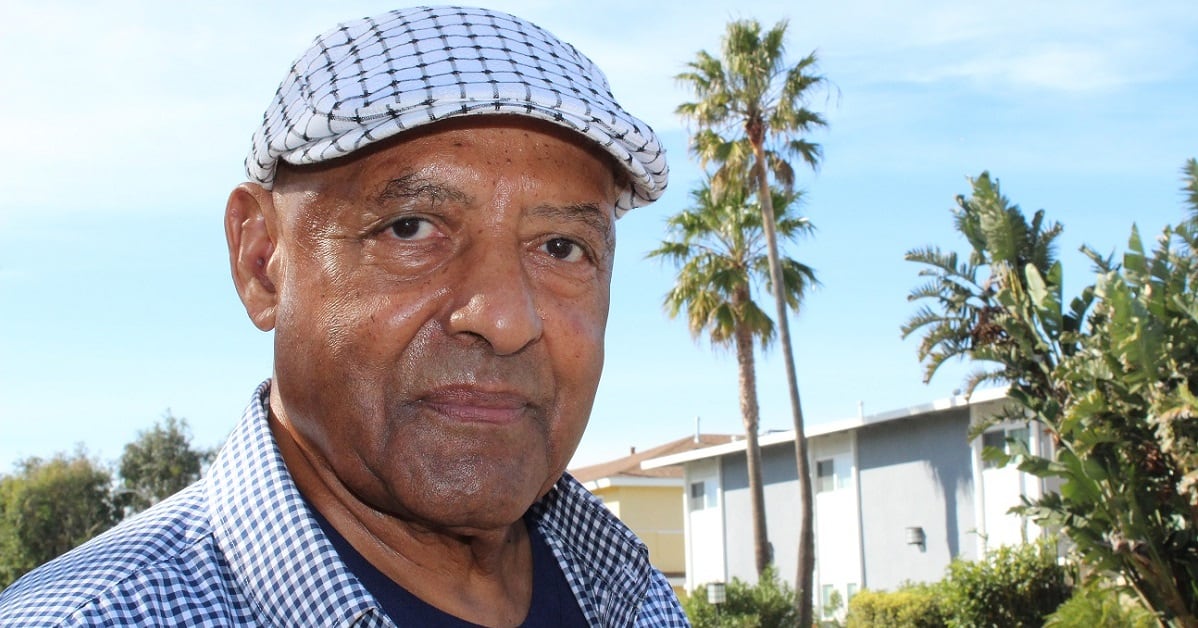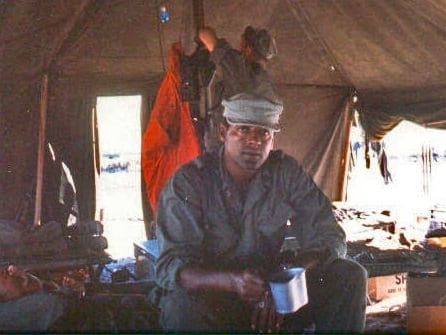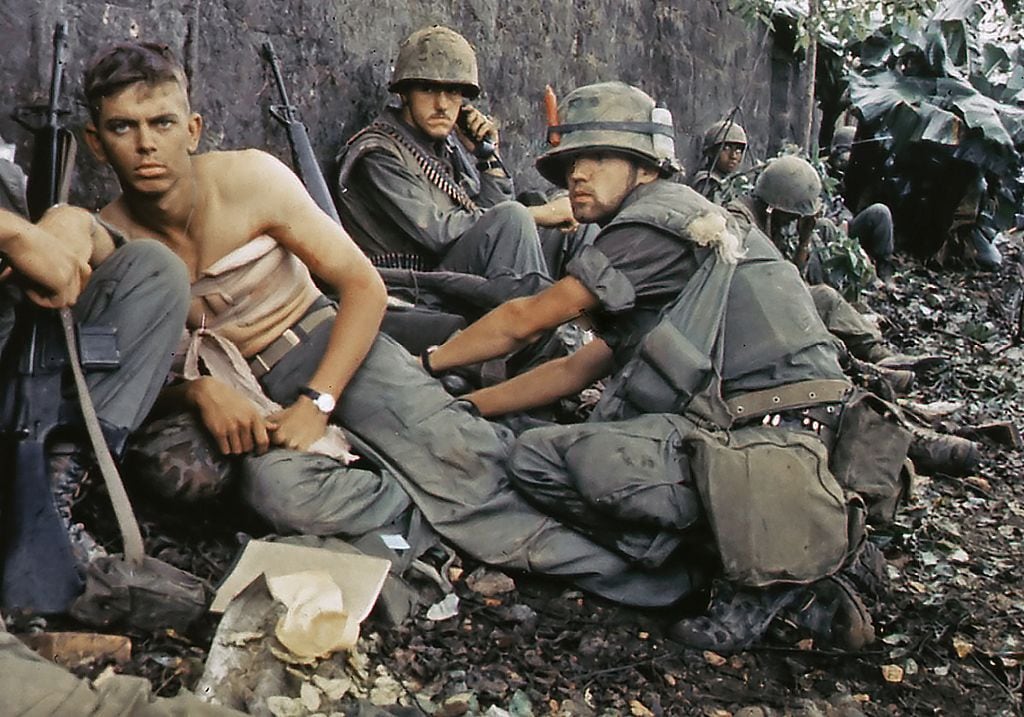Retired Marine Sgt. Maj. John Canley will receive the Medal of Honor, the nation’s highest award for valor, during a ceremony Oct. 17, the White House announced Tuesday.
Canley will be honored nearly a half century after his heroic actions in Hue City, Vietnam, saved the lives of Marines under his command.
Then-Gunnery Sgt. Canley led an undersized company of Marines during one of the Corps’ bloodiest urban street battles in Hue City, Vietnam.
Outgunned by nearly 10,000 North Vietnamese Army soldiers, who assaulted the urban stronghold in January 1968 as part of the infamous surprise attack that would become known as the Tet Offensive, Canley took command of Alpha Company, 1st Battalion, 1st Marine Regiment after its commanding officer was severely wounded at the outset of the battle.
From Jan. 31 to Feb. 6, 1968, Canley exposed himself on numerous occasions to machine gun and rocket-propelled grenade fire as he led his company and helped keep his Marines alive.

On Feb. 6, 1968, Canley twice scaled the wall of a hospital in plain view of enemy forces to rescue and aid wounded Marines, according to a White House release.
“We’d all be dead if it wasn’t for the gunny,” said former Marine Pfc. John Ligato, who served under Canley at Hue City.
Canley originally was awarded the Navy Cross, but fellow Marines Ligato and Eddie Neas helped lead an effort to upgrade the former gunny’s award to the Medal of Honor.
RELATED

Canley’s heroics are not a surprise to the men of Alpha Company who fought under the gunny’s command, it was just a part of who he was.
“Everybody had a story about him,” Neas said.
It was usually a different situation but always the same story, he said.
Neas was a 19-year-old machine gunner and lance corporal in Canley’s outfit during the Hue City fight, but he didn’t join the infamous battle until Feb 4, 1968, a couple days after some of Canley’s heroics, because he was fighting in Con Thien, in the Quang Tri province of Vietnam.
Nonetheless, Neas was well acquainted with Canley’s leadership style, having survived a major battle in Con Thien in December 1967 when Canley was Alpha Company’s gunny.
It was Dec. 15, 1967, and the men of Alpha were trying to assault an entrenched North Vietnamese position in Con Thien, but every time a Marine got up to move he was shot, Neas said, recounting the firefight.
One of the machine gunners “took a shot right through the chest" and a corpsman sprinting to his aid also took a bullet, Neas said.
“Then, out of the clear blue, Gunny Canley comes with this slow methodical walk that he had,” Neas said. “He came down with rifle shots going off and picked up the corpsman and took him back to the rear.”
The towering gunny, who is over six feet tall, didn’t even “get a scratch,” Neas said.
Canley was known for leading from the front, checking on his men, and setting the example.
“When the sh*t hit the fan ... men like Gunny Canley were already up in front with you,” Neas said.
Even then, it still took nearly 13 years to push Canley’s medal upgrade through the Pentagon’s red tape.

“The delays were never on the merits of Gunny Canley’s actions, they were bureaucratic delays,” Ligato said.
Canley’s heroics at Hue City occurred over a half-century ago, and at the time there were no officers in the company to endorse him for the Medal of Honor.
Another Marine in Canley’s outfit was posthumously awarded the Medal of Honor for the Hue City fight in 1969. Canley endorsed the medal for Sgt. Alfredo Gonzalez, who was killed during the battle.
To push Canley’s upgrade, Ligato needed to track down witness statements and endorsements from a chain of command that was mostly deceased.
Out of 13 officers from Canley’s chain of command, only Maj. Gen. Ray ‘E-Tool’ Smith and a Marine colonel were still alive to endorse the upgrade.
Canley’s award nomination had to hit every wicket before it could be forwarded along in the process.
Every minor hiccup along the way would cause Canley’s package to be rejected, which would add another two months, six months, or even a couple years to correct.
“Some Navy officer at the Department of the Navy rejected the Medal of Honor because he had a checklist before he could forward the package,” Ligato said.
Ligato eventually teamed up with California Rep. Julia Brownley, D-Calif. to help speed up the process.
After years of review by the Defense Department, Secretary of Defense Jim Mattis finally notified Brownley that the DoD would endorse Canley’s upgrade to the Medal of Honor.
Brownley spearheaded a bill in Congress to waive a five-year time restriction on awarding the Medal of Honor. By law, a service member must be awarded the medal within five years of the action that merited the award.
Brownley’s bill passed the House on Dec. 21 and the Senate on Jan. 16. It was signed by President Donald Trump on Jan. 29.
“Sergeant Major Canley is a shining example of why our armed forces are the best military in the world, and his heroism and bravery showcases what being an American hero truly means,” Brownley said in a press release. “I am so happy that the White House has announced that he will receive the Medal of Honor for his gallantry during the Vietnam War."
More than 200 Americans were killed and more than 1,000 wounded during the nearly month long fight to dislodge NVA soldiers in the bloody street-to-street battle that engulfed Hue City in 1968.

Leaders like Canley were pivotal in retaking the city and keeping scores of Marines alive in the urban battle that the Corps was ill-prepared for.
The Hue City urban fight still stands as a learning tool for Marines training to fight in dense city populations.
“For a leader, basically the only thing you’re thinking about is taking care of your people and defeating the enemy,” Canley said.
Rarely sleeping during the battle, Canley at times single-handedly repelled multiple attacks on his company’s position, “literally charging machine gun positions with law rockets and hand grenades,” Ligato recounted.
Finally, on July 9, Trump notified Canley by phone that he would be awarded the Medal of Honor.
“He just basically said it’s been a long time coming, he had approved it, and basically it would be awarded at a later date,” Canley told Marine Corps Times, recounting his brief conversation with the president.
Nearly 100 men and families of Alpha Company are expected to be in Washington, D.C., during the Medal of Honor ceremony.
“I am accepting this on behalf of all the Marines I had the honor of serving with in Vietnam and who continue to be an inspiration to me every day,” Canley said in a press release. “Their bravery and sacrifice is unparalleled."
Shawn Snow is the senior reporter for Marine Corps Times and a Marine Corps veteran.




